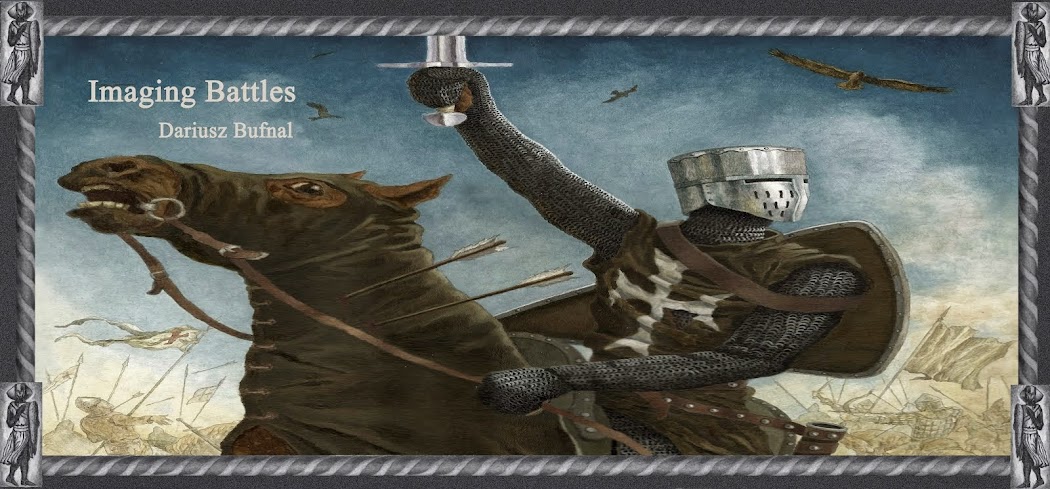sources
 .
.My blog is not focused on any specific time or place- you will find there warriors of different places and time. I hope you will enjoy my historical artwork.
XIX Century
wtorek, 5 maja 2015
Before the battle of al-Qadisiyyah 636
The gear of two horsemen is based on the late Sasanian iconography and shows strong Turkic influence clearly visible in the P-shaped sheaths suspensions and hour-glass quivers. The horse armor of the warriors follows the patterns represented on the spahbedan seals supplemented by the Turkic designs reconstructed by Gorburnov. The armor of the rider on the right is an attempt to reconstruct personal protective equipment from the spahbedan seals, the rider on the left wears the gear from famous Taq e Bostan frieze. Green ribbons of the rider on the left are the mark Mihran clan and designate the leader of Mihran contingent while the red ribbons of the warrior on the rider on the right associate with artesharan class color and may designate arteshtaransalar i.e. the leader of the warriors being high officer rank which by the late Sasanian time had either been extinct or had purely honorific meaning.
first publication: Desperta Ferro n 24
Subskrybuj:
Posty (Atom)





